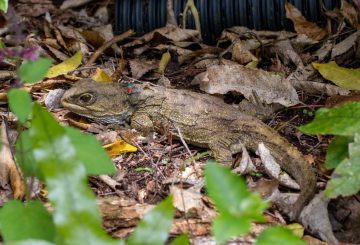재미있는 겨울 활동으로 고래 수를 세는 것을 생각해 본 적이 있습니까?뉴질랜드의 그레이트 카이코우라 고래 카운트에서는 6월 27일부터 7월 10일까지 자원봉사자를 모집합니다.카이코우라 해양 연구소 (KORI) 는 Covid-19 제한으로 인해 여행사가 문을 닫았던 2020년에 이 프로젝트를 시작했습니다.
이 프로젝트의 목표는 남극 대륙 근처 남극해의 먹이장과 따뜻한 기후의 번식지 사이에서 이동하는 고래의 수를 추정하는 것입니다.자금 부족으로 집계가 1년 동안 중단되었지만, KORI 소장인 조디 위어 박사는 카이코우라 지역 의회로부터 자금을 확보했다고 확인했습니다.
전국에서 온 약 200명의 자원봉사자들이 연간 집계를 지원합니다.3년 동안 KORI에서는 혹등고래를 비롯한 고래의 수가 증가하고 송아지가 많이 서식하는 것을 관찰했습니다.위어 박사는 “2022년 최고의 날에 혹등고래 40마리를 세었는데 범고래, 향유고래, 대왕고래가 있었다”고 말했다.
2020년 5월, 현지 관광업체인 웨일워치와 돌핀 인카운터 (Dolphin Encounter) 는 코로나바이러스로 인해 문을 닫았지만 고래들은 여전히 이동 중이었습니다.일을 하지 않아 정부 보조금을 받는 사람들이 도움을 받으러 갔고, 그 지역에 갇혀 있던 관광객들도 함께 보내졌습니다.
KORI는 학생들이 고래 수를 세는 등의 이니셔티브 운영을 도울 수 있도록 일부 인턴십 기금을 협의회로부터 받았습니다.6월 27일부터 7월 10일까지 매일, 자원봉사자들은 날씨가 좋으면 오전 10시부터 오후 4시까지 카이코우라 반도의 모니터링 스테이션에서 고래를 관찰할 예정입니다.
6월 27일에는 카이코우라 박물관에서 교육 세션이 열릴 예정이며, 6월 29일 토요일과 7월 7일 일요일에는 고래를 기념하는 무료 행사가 열릴 예정입니다.자세한 내용은 gkwc2024@gmail.com 으로 문의하시기 바랍니다.




























































